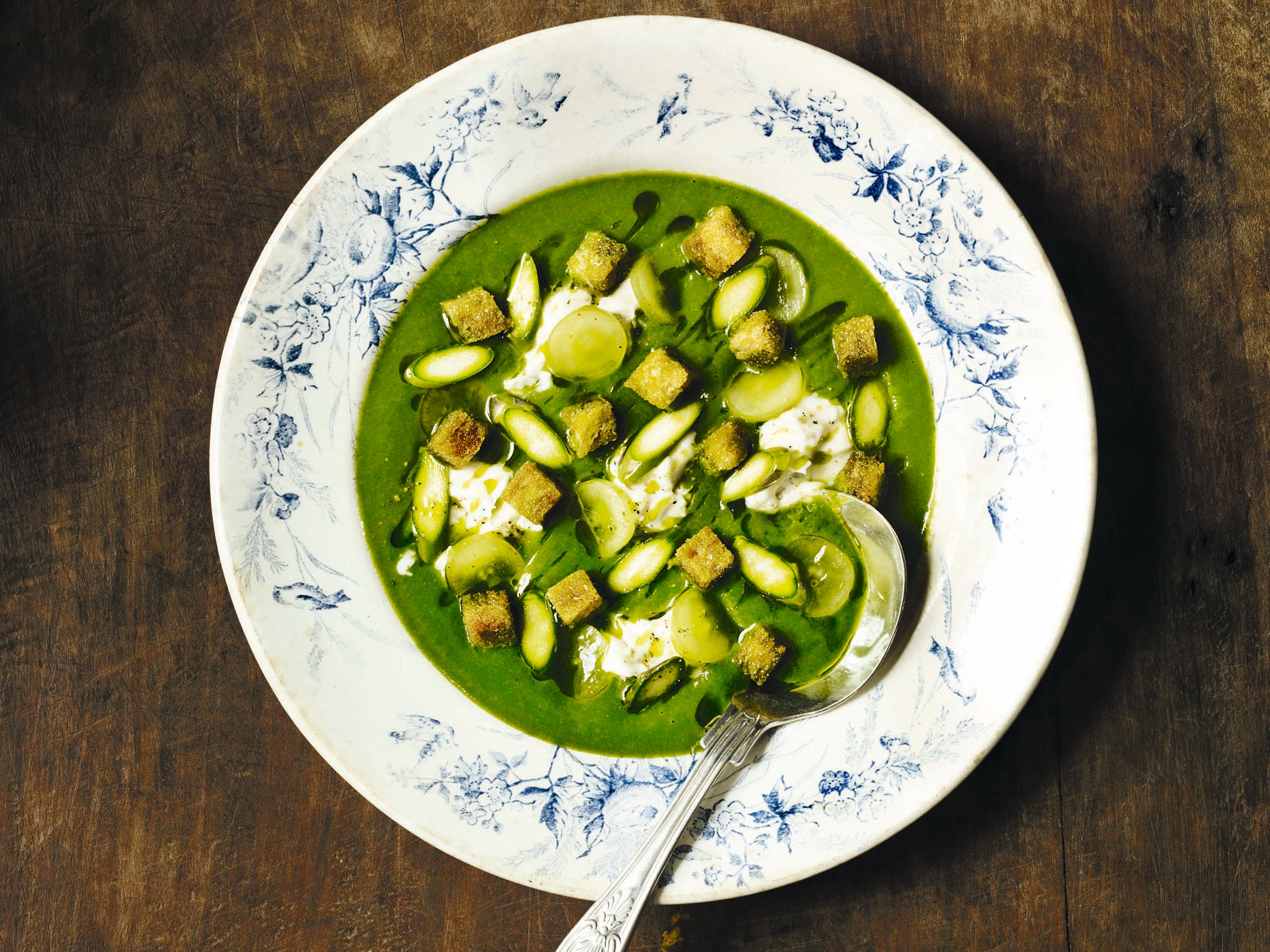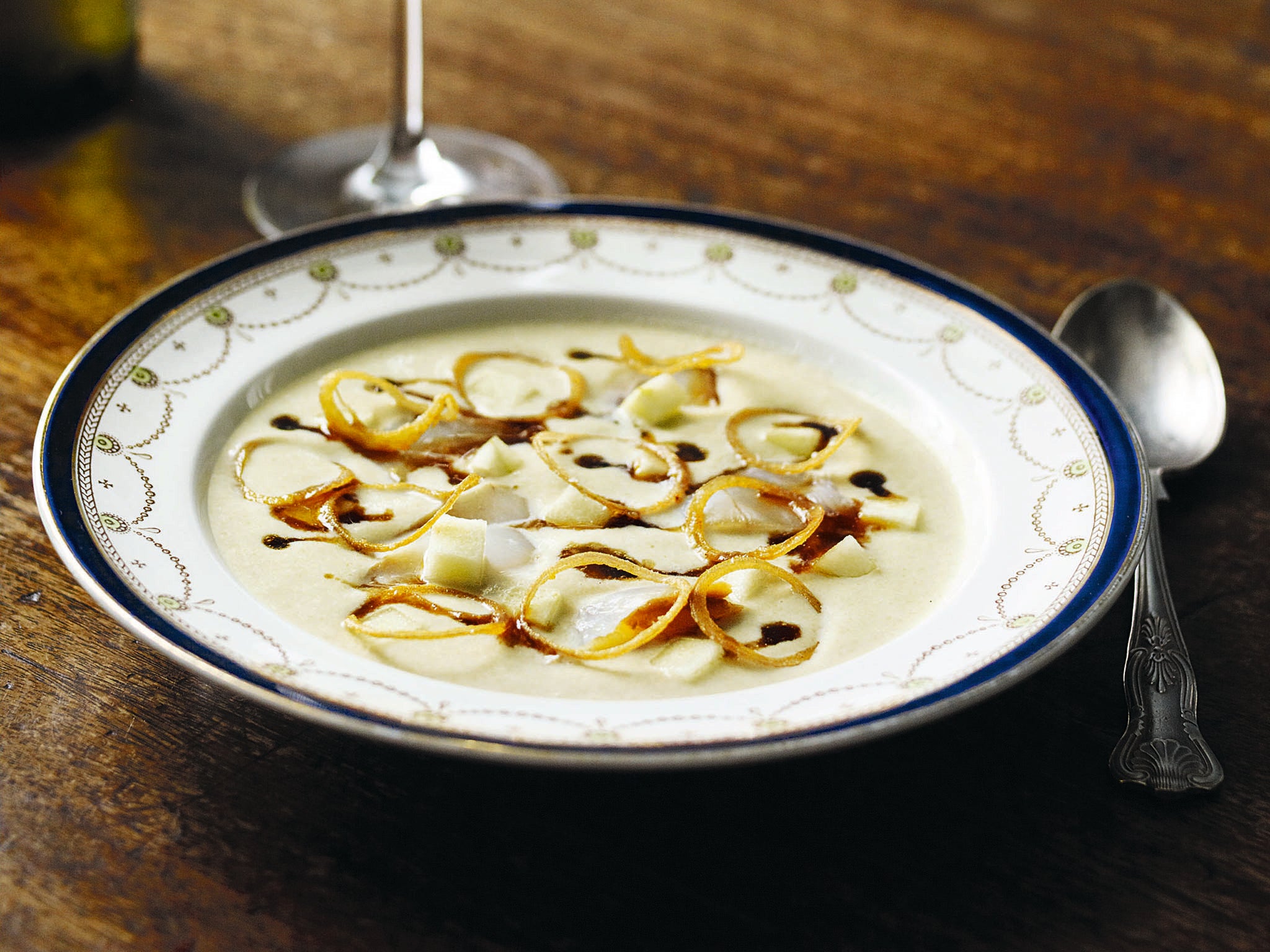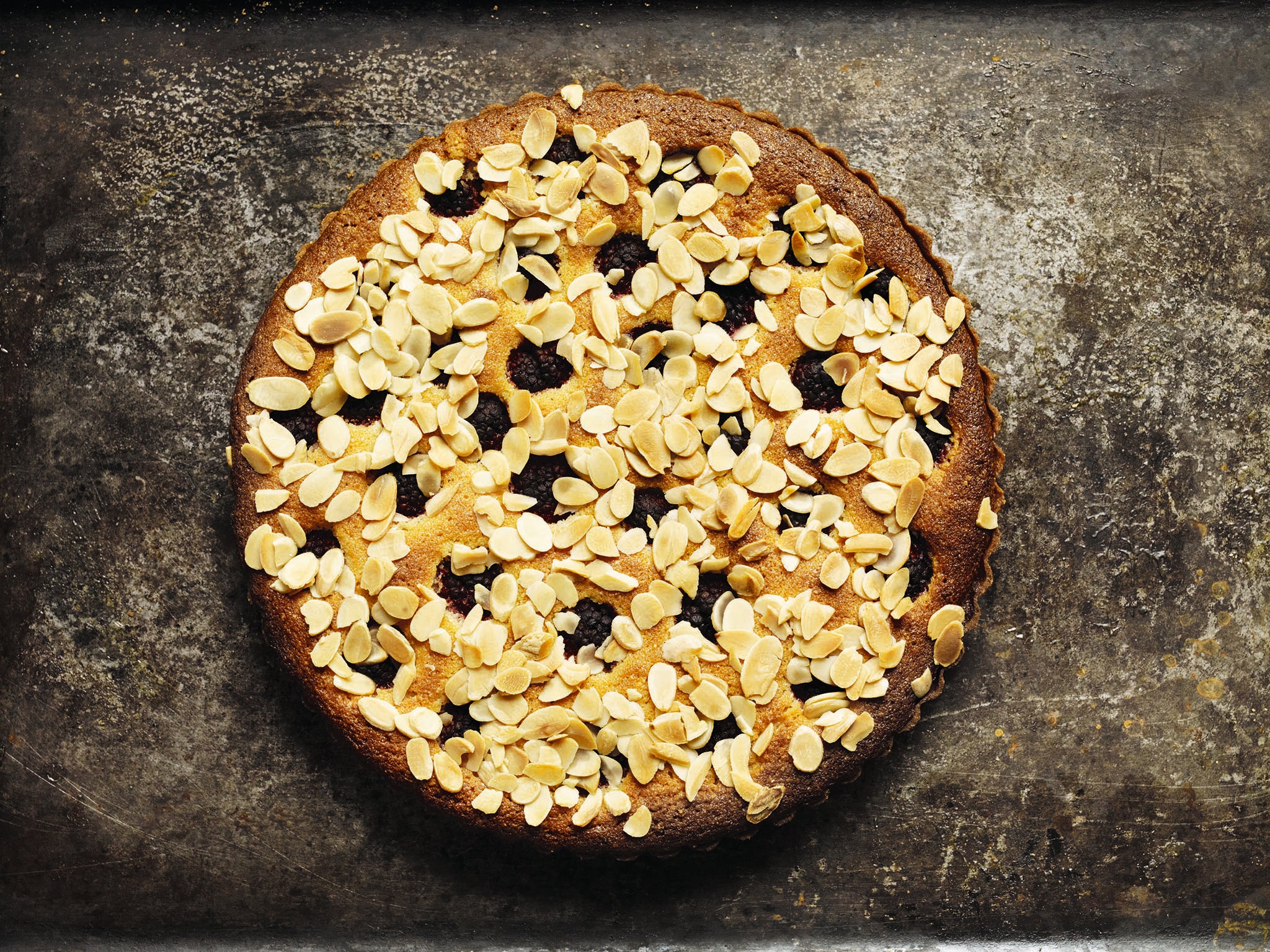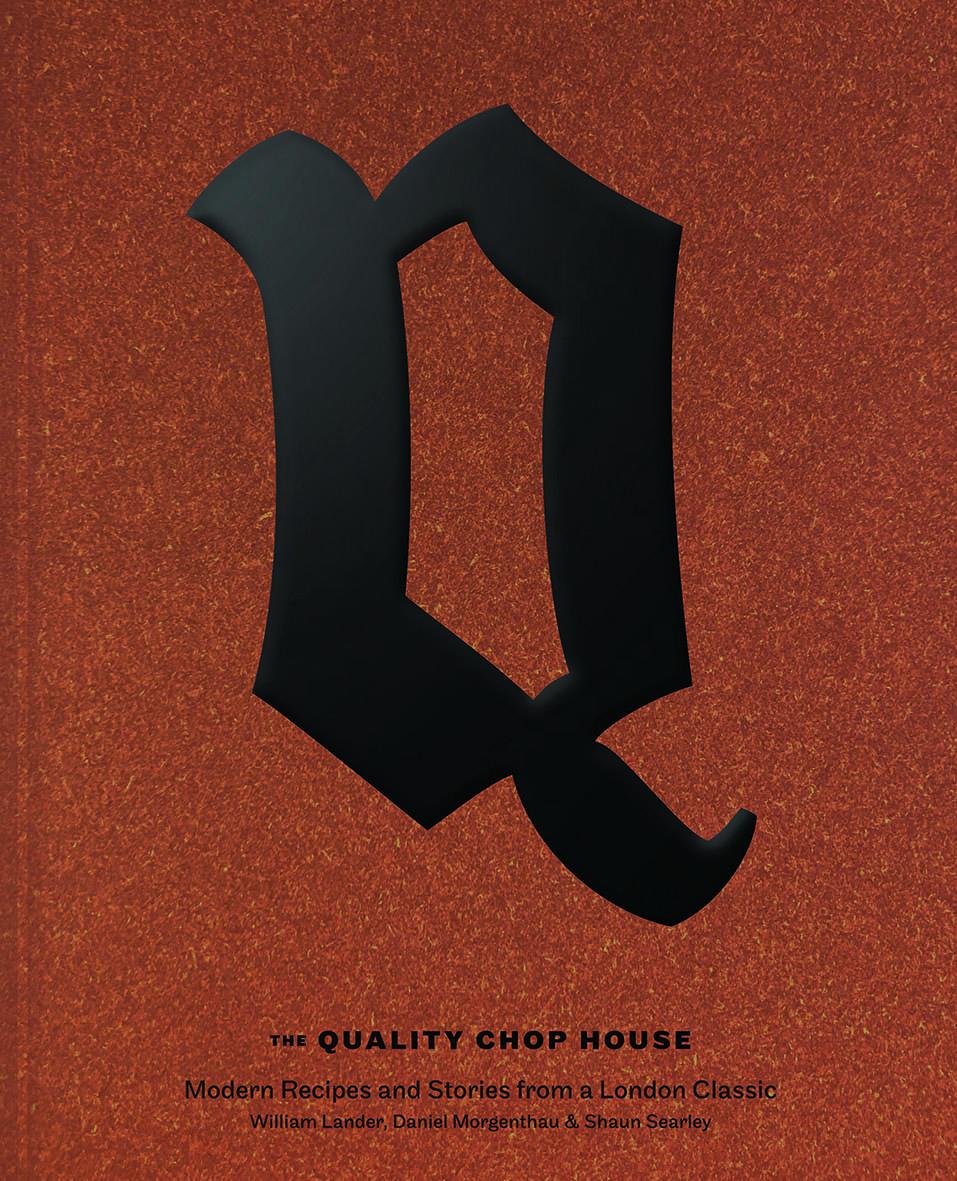'The Quality Chop House': Recipes from cullen skink to lovage soup
It’s been a restaurant on Farringdon Road in London since 1869 and reopened in 2012 with modern innovative cooking, now comes its debut book

Your support helps us to tell the story
From reproductive rights to climate change to Big Tech, The Independent is on the ground when the story is developing. Whether it's investigating the financials of Elon Musk's pro-Trump PAC or producing our latest documentary, 'The A Word', which shines a light on the American women fighting for reproductive rights, we know how important it is to parse out the facts from the messaging.
At such a critical moment in US history, we need reporters on the ground. Your donation allows us to keep sending journalists to speak to both sides of the story.
The Independent is trusted by Americans across the entire political spectrum. And unlike many other quality news outlets, we choose not to lock Americans out of our reporting and analysis with paywalls. We believe quality journalism should be available to everyone, paid for by those who can afford it.
Your support makes all the difference.Chilled lovage soup with gorgonzola, asparagus and grapes
This is a perfect example of suppliers writing the menu and dishes for us. Natoora had an abundance of lovage and that same weekend Shaun had visited Elliot from the Ham & Cheese Company in Bermondsey, who had the most amazing gorgonzola. It was a hot day and he’d been wracking his brain for a cold soup to put on the menu. This was the answer. Lovage is incredibly herbaceous, and pairs brilliantly with the salty, creamy gorgonzola and the sweetness of the asparagus and grapes.
Serves 6
2 onions
2 leeks, tough green outer leaves discarded
4 celery sticks
½ fennel bulb
2 garlic cloves
Olive oil, for drizzling
Sprig of thyme
2 bay leaves
150ml white wine
2 floury potatoes
2l vegetable stock or water
2 slices of farmhouse white bread, cut into 2cm dice
250g lovage
250g baby spinach
Salt, to taste
To garnish
100g grapes, thinly sliced
6 baby asparagus spears, thinly sliced
200g gorgonzola, at room temperature
Wild garlic oil
Peel and evenly dice the onions, leeks, celery and fennel. Peel and finely chop the garlic. Heat a good glug of olive oil in a large heavy-based pan over a low-medium heat and sweat the diced vegetables with the thyme and bay leaves. Keep the heat low as you don’t want to get any colour on the vegetables. They should take about 20 minutes to soften.
Add the white wine and simmer until the liquid has reduced by half. Peel and dice the potatoes and add along with the vegetable stock or water. Simmer for another 20-30 minutes until the potatoes are cooked. Leave to cool, then chill in the fridge until you are ready to make your soup.
To make your croutons, preheat the oven to 170C. Toss the bread cubes with olive oil and salt and bake for 5-10 minutes, or until golden brown and crunchy. Leave on a piece of kitchen paper to drain while you finish the soup.
Meanwhile, bring another large saucepan of water to the boil with a good pinch of salt and prepare a large bowl of iced water. Blanch the lovage and spinach for 30 seconds in the boiling water, strain and plunge into the iced water (this will ensure the vibrant green colour is kept).
Once chilled, strain again and squeeze out the excess water. In a high-speed blender, whizz the lovage, spinach and chilled soup base together – you will probably have to do this in several batches. Pass the soup through a fine sieve as you go. Double-check the seasoning and pour into soup bowls. Garnish with thinly sliced grapes and asparagus, spoon over the gorgonzola and finish with the garlic oil and croutons.
Flavoured oils: parsley or other herbs. This is not so much a recipe as a very simple way to use up herbs. The method below would work with any soft green herb, but we tend to use wild garlic and parsley the most. It is another way of extending wild garlic season.
Take a handful of parsley, wild garlic leaves or any other soft herb. Blanch in boiling water and refresh in ice-cold water before blending with vegetable oil until you have an oily consistency.

Cullen skink
Cullen skink is a wonderful creamy soup, thickened with smoked fish and potatoes, that comes from the small village of Cullen in northeast Scotland. We started smoking our own fish in our ovens five years ago and this dish came on the menu not long after. Crispy shallots and rich brown butter elevate a humble everyday Scottish classic to something pretty special.
Serves 6
2 small onions
2 small leeks
2 celery sticks
½ small fennel bulb
1½ garlic cloves
2 sprigs of thyme
2 bay leaves
Olive oil, for frying
750ml milk
750ml fish stock – see below
½tsp black peppercorns
Rind of ½ lemon
400g smoked haddock
100ml white wine
1 floury potato
25g dijon mustard
50g creme fraiche
50ml double cream
100g butter
Shallots
1 shallot, very thinly sliced
25g dredge mix – see below
Olive oil, for deep-frying
To serve
1 small granny smith apple
50g apple sauce – see below
50g brown butter jus – see below
Peel and evenly dice the onions, leeks, celery and fennel. Peel and finely chop the garlic. Heat a good glug of olive oil in a large heavy-based saucepan over a low-medium heat and sweat the vegetables and garlic with 1 sprig of thyme and 1 of the bay leaves. Keep the heat low as you don’t want to get any colour on the vegetables. They should take around 20 minutes to soften.
While this is happening, warm the milk and fish stock in another large saucepan. Season with the peppercorns, lemon rind and the remaining thyme and bay leaf then gently drop in 300g of the haddock, reserving the rest for garnish. Poach the fish for 10 minutes then carefully lift it out and leave to cool.
Back to the soup base. Add the wine and cook over a medium heat until the liquid has evaporated. Peel and dice the potatoes, and add these to the pan along with the fish stock-milk mix and the dijon mustard. Simmer for 20-30 minutes. Once the potatoes are cooked, add the creme fraiche and cream. Peel off and discard the skin from the poached haddock and add the flesh to the soup. If it seems very thick, add a touch of water then process in a high-speed blender in batches, passing through a fine sieve as you go. Check the seasoning and chill if not serving immediately.
Half-fill a deep heavy-based saucepan with oil and heat to 170C. Separate the shallot slices into rounds, dust in the dredge mix and shake off any excess. Deep-fry in the hot oil for 5-8 minutes – they should be lightly golden. Remove with a slotted spoon, drain on kitchen paper and season with salt.
Preheat the oven to 170C. Rub the reserved 100g haddock with butter, and put it into a small roasting tray. Bake for 8 minutes or so until it starts to soften. To serve, peel the apple and dice while you reheat the soup. Pour into bowls and garnish with pieces of the baked smoked haddock, dots of apple sauce and apple dice. Finish by drizzling with brown butter jus.
Fish stock
Washing the bones is a vital step in order to get rid of any blood and impurities and will help prevent the stock from going cloudy. When you’re making fish stock, make sure not to cook it for too long. After 20-30 minutes most of the flavour will be extracted from the bones; any longer and you’ll end up with something resembling a thick fish stew.
2kg white fish carcasses (cod, pollock, haddock, coley, whiting)
2 celery sticks
2 onions
1 small leek
1 small fennel bulb
2 bay leaves
Sprig of thyme
Leave the fish bones under running cold water for 20 minutes, then transfer to a large saucepan and cover with cold water. Peel and roughly chop the celery, onions, leek and fennel. Add the chopped vegetables to the pan along with the bay leaves and thyme. Bring to the boil and skim off any froth that rises to the surface. Reduce to a simmer and cook for 20-30 minutes, skimming occasionally. Pass through a fine sieve and leave to cool before storing in an airtight container in the fridge for up to 3 days, or freeze once cooled.
Dredge mix
This is a seasoned flour for coating vegetables or meat before frying, such as the crispy shallot rings used on the smoked and cullen skink.
Makes 200g
175g plain flour
1tbsp garlic powder
1tbsp onion powder
1tsp smoked paprika
1tsp cayenne pepper
¾tsp freshly ground black pepper
1tsp salt
Combine all the ingredients and store in an airtight container until ready to use.
Brown butter jus
This is a great way to add or enhance the savoury umami flavours in dishes. We use it on some fish dishes like roasted turbot, and on all our grilled steaks.
Makes 400ml
200ml beef sauce see below
250g butter
First, make brown butter. Gently heat the butter to 180C, carefully skimming and discarding the froth that will form on top. Once the butter reaches 180C and smells nutty, pass the brown butter through a fine sieve into a bowl. You can store this in the fridge for up to a month. To make the jus, warm the beef sauce and brown butter together in a pan over a medium heat, whisking until the butter is completely melted into the sauce.
Beef sauce
A crucial part of our brown butter jus, this is simple to make and brings a delicious depth of flavour to meat dishes.
Makes 1l
1.5l dark chicken stock
1l dark beef stock
250ml port
250ml red wine
Combine the stocks, port and wine together. Bring to the boil over a medium heat, then turn down to a simmer. Leave the stock to reduce by two thirds, skimming off any fat that rises to the surface. You should end up with a rich, full-bodied sauce that is almost sticky in texture. Chill and store in the fridge for up to 4 days, or freeze the sauce in sandwich bags for later use.
Bramley apple sauce
This is a real all-rounder and quickly disappears from the shop shelves. Great with roast pork, obviously, but also wonderful on porridge.
Makes enough to fill 6 228ml kilner jars
1.5kg bramley apples
50ml lemon juice
200g caster sugar
150ml water
Peel, core and dice the apples, then combine with the remaining ingredients in a large saucepan. Place over a low-medium heat and simmer for 20–30 minutes, stirring occasionally, until you have a chunky puree. Chill and store in an airtight container for up to 2 weeks.

Raspberry and almond tart, creme fraiche
Once you have got the hang of making your own sweet pastry and blind baking into a tart case, recipes like this are incredibly simple to adapt according to whatever fruits are in season. Frangipane is an almond-flavoured sweet filling that goes wonderfully with pears, apricots, plums, cherries – the list goes on.
Serves 12
Frangipane
225g unsalted butter, at room temperature
225g caster sugar
3 free-range organic eggs
50g plain flour
225g ground almonds
Pinch of salt
1 blind-baked tart case – see below
50g raspberry jam
200g raspberries
70g flaked almonds
Creme fraiche, to serve
First, make the frangipane. Cream together the butter and sugar until light and fluffy and almost white in colour. Beat in the eggs one at a time – if the mixture looks like it is going to separate, add a little flour. Fold in the rest of the flour along with the almonds and salt, then store in the fridge for up to a week. Allow it to come to room temperature before using.
Preheat the oven to 170C. Gently spread the jam over the bottom of the tart case. Fill a piping bag with the frangipane (you’ll need about 350g for this recipe) and pipe it over the jam, up to the pastry lip. Push the raspberries into the frangipane.
Bake in the oven for 8 minutes, then sprinkle over the flaked almonds and bake for another 20 minutes. Use a skewer to check the centre of the tart – if it comes out clean it’s cooked, otherwise give it another 5 minutes. Leave to rest for at least 1 hour before serving with creme fraiche.
Sweet pastry tart case
Makes enough for 3 x 20cm fluted tart cases
250g butter, at room temperature
180g caster sugar
1 vanilla pod, split lengthways and seeds scraped out
2 free-range organic eggs
500g plain flour
Beaten egg yolk, to glaze
Cream together the butter, sugar and vanilla seeds until light and fluffy and almost white in colour.
Beat in the eggs one at a time – if the mixture looks like it is going to separate, add a little flour. Fold in the rest of the flour in 3 batches and bring it together to form a dough.
Divide the dough into 3 pieces, then wrap in cling film and store in the fridge or freezer until you need it.
To make a blind-baked tart case, take a piece of dough and roll out to a 25cm circle, 3mm thick. Use it to line a 20cm fluted loose-bottomed tart case. Leave to rest in the fridge for at least 2 hours.

Preheat the oven to 170C. Lay out 2 sheets of cling film to really get into the grooves of the tart case, one on top of the other, and press into the lined tart case. Fill with baking beans or dried haricot beans and bake for 15-20 minutes. Carefully remove the beans and continue to bake for another 5-10 minutes.
The pastry should be a pale golden colour and firm to the touch – if the centre is still a little soft give it another minute or two in the oven.
Once it’s definitely baked, make sure there are no holes (you can patch them up with a little leftover pastry), then brush with a little egg yolk to glaze.
‘The Quality Chop House: Modern Recipes and Stories from a London Classic’ by William Lander, Daniel Morgenthau and Shaun Searley (Quadrille, £30) Photography: Andrew Montgomery
Join our commenting forum
Join thought-provoking conversations, follow other Independent readers and see their replies
Comments